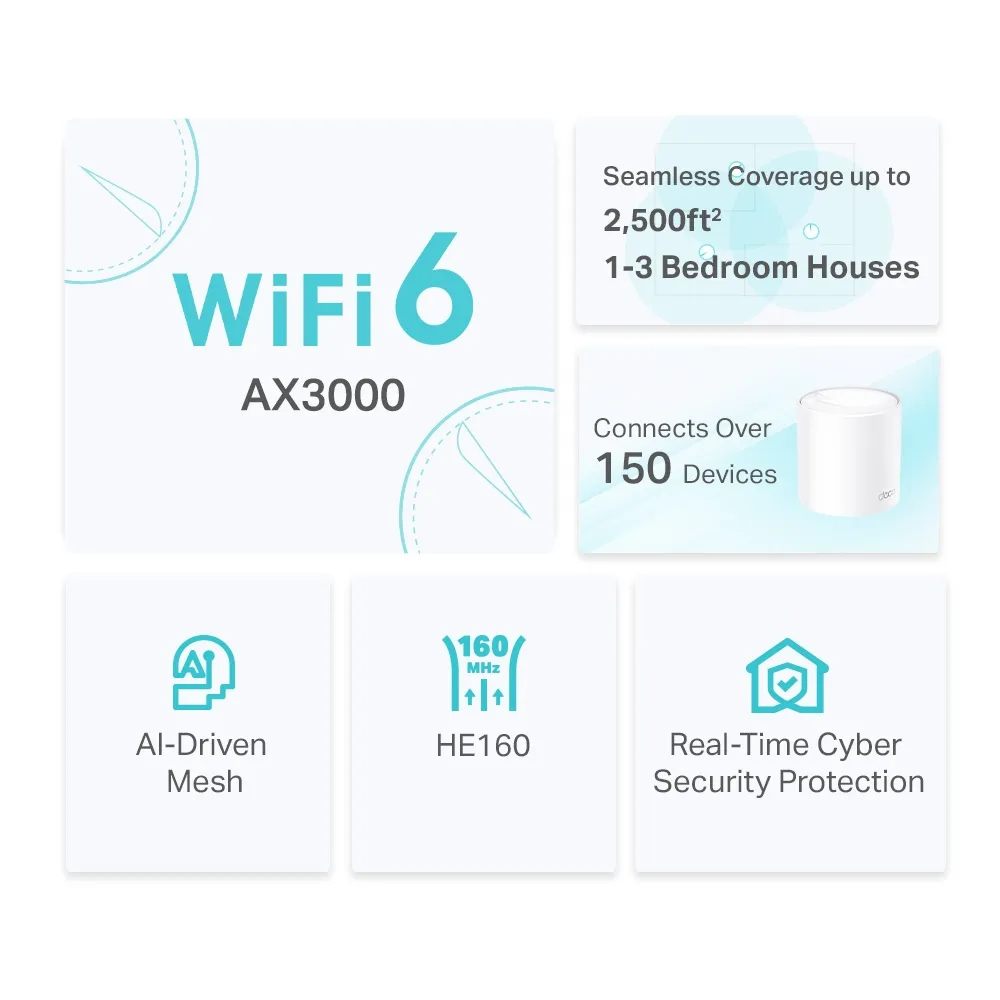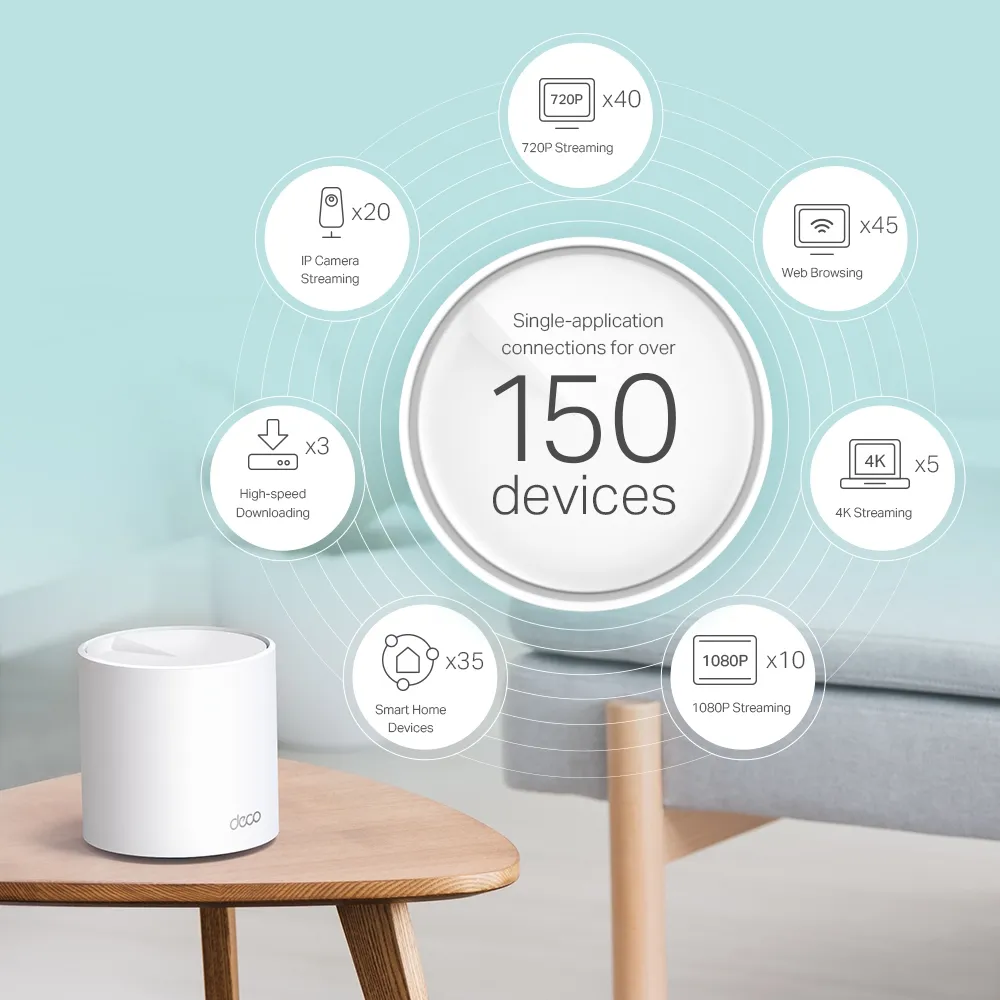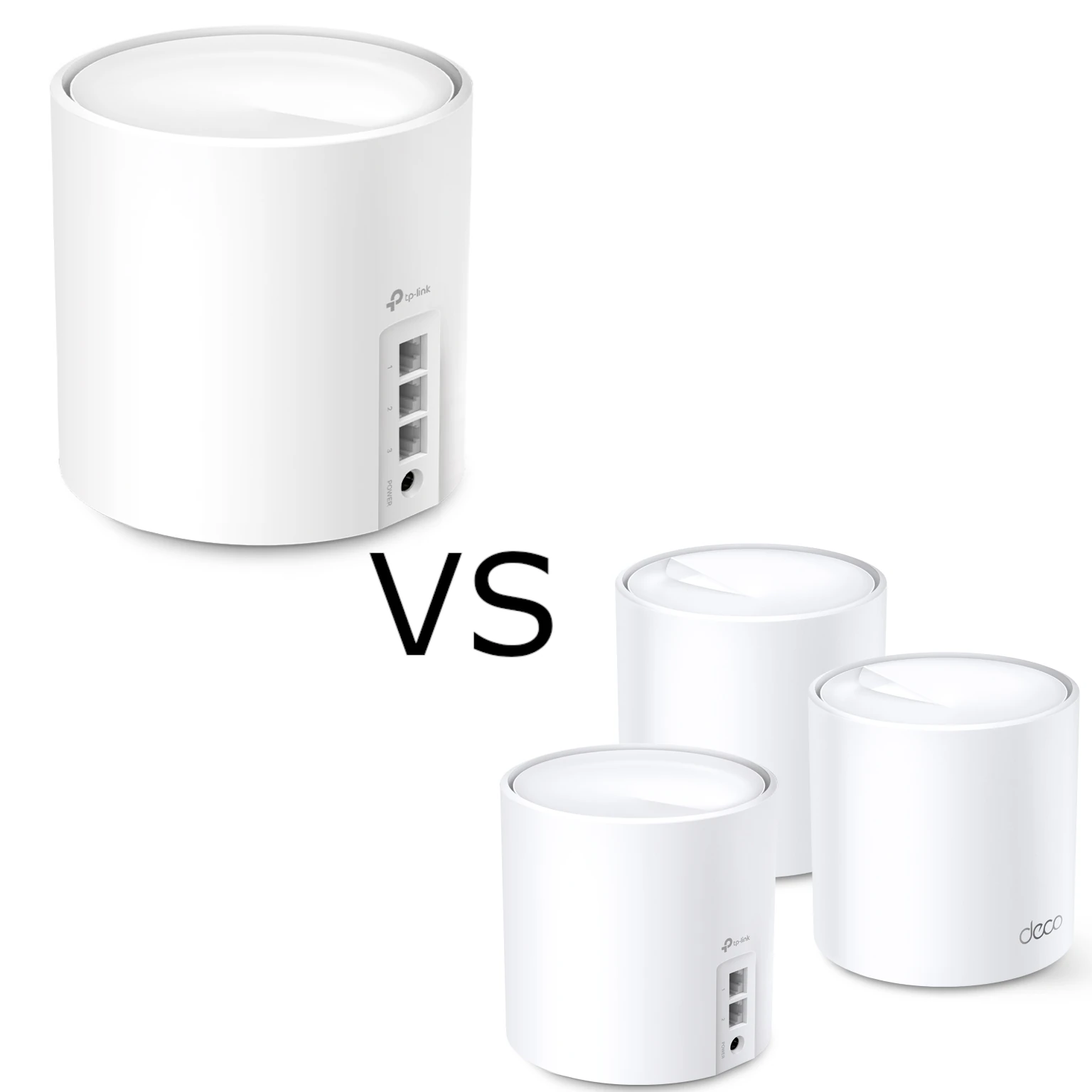As our homes become more connected with smart devices, ensuring a robust and seamless WiFi connection throughout every corner of the house has become crucial. Enter mesh networking systems, which promise to eliminate dead zones and provide consistent internet coverage. Two popular models from TP-Link, the Deco X50 and Deco X60, offer impressive features and performance. But which one should you choose? Let’s dive into the details.
What is Mesh Networking?
Imagine a blanket of Wi-Fi seamlessly covering your entire home. That’s the magic of mesh networking. It utilizes multiple units (nodes) that work together to create a unified Wi-Fi network. These nodes communicate with each other, intelligently handing off devices as you move around the house, ensuring a stable and consistent connection.
Benefits of Mesh Networking
- Elimination of Dead Zones: By placing nodes strategically around your home, you ensure strong WiFi coverage everywhere.
- Seamless Roaming: As you move around, your device automatically connects to the strongest signal without interruption.
- Scalability: Easily add more nodes to expand your network coverage as needed.
- Centralized Management: Control and manage your network through a single app, making network setup and troubleshooting simpler.
Power Up Your Wi-Fi with WiFi 6
Both Deco X50 and X60 boast the latest WiFi 6 technology, also known as 802.11ax. This next-generation Wi-Fi standard offers significant improvements over its predecessor, making it ideal for the growing demands of our internet usage:
- Faster Speeds: Experience noticeably faster download and upload speeds. WiFi 6 utilizes wider channels and more efficient data encoding techniques to achieve significantly faster speeds than WiFi 5. This translates to quicker downloads, smoother streaming of 4K and even 8K videos, and a more responsive online gaming experience.
- Increased Capacity: WiFi 6 can handle more connected devices efficiently, reducing congestion and lag. With the ever-increasing number of smart home devices, WiFi 6’s ability to handle more devices simultaneously becomes increasingly important. Features like Orthogonal Frequency-Division Multiple Access (OFDMA) allow WiFi 6 to transmit data to multiple devices at once, reducing congestion and lag, especially in environments with many connected devices.
- Improved Battery Life: WiFi 6 utilizes features like Target Wake Time to optimize power usage for connected devices, extending battery life. Target Wake Time essentially schedules designated periods for devices to wake up and receive data, instead of constantly listening for signals. This significantly reduces battery drain on your smartphones, tablets, and other wireless devices.
Other commonalities between the X50 and X60
- WiFi Standard: WiFi 6 (802.11ax)
- Dual-Band: 2.4 GHz and 5 GHz
- MU-MIMO Technology: Allows multiple devices to receive data simultaneously
- Beamforming: Focuses signal towards connected devices for better performance
- Parental Controls: Manage and monitor internet use for your family
- App Control: TP-Link Deco app for easy setup and management
- Ethernet Ports: Gigabit Ethernet ports for wired connections (Counts differ)
- Security: Both units support WPA3 (Learn why WPA3 is important), as well as advanced Parental Controls via TP Link Homeshield.
- Size: Their size is exactly the same at 4.33 × 4.33 × 4.49 in / 110 × 110 × 114 mm
Differences Between Deco X50 and Deco X60
| Feature | TP-Link Deco X50 | TP-Link Deco X60 |
|---|---|---|
| Speed | Up to 3 Gbps 5 GHz: 2402 Mbps (802.11ax, HE160) 2.4 GHz: 574 Mbps (802.11ax) | Up to 5.4 Gbps 5 GHz: 4804 Mbps (802.11ax) 2.4 GHz: 574 Mbps (802.11ax) |
| Capacity | 4 Streams 2×2 MU-MIMO and OFDMA | 6 Streams 1×1 MU-MIMO and OFDMA |
| Price | More affordable | Higher price |
| Antennas | 2x Internal antennas per unit (Version 1 and 2) 3x Internal antennas per unit (Version 3) | 4x Internal antennas per unit |
| Ports | 3x Gigabit Ports | 2x Gigabit Ports |


Use Cases
- Deco X50:
- Ideal for medium-to-large-sized homes looking for a balance of performance and affordability. It’s a great choice for families who enjoy streaming movies and shows, browsing the web, and casual gaming. With its ability to handle multiple devices efficiently, the Deco X50 is well-suited for homes with a mix of smartphones, tablets, laptops, smart TVs, and other connected devices.
- Deco X60:
- Perfect for large homes with heavy internet usage, multiple devices, and online gamers. The X60’s increased coverage area ensures a strong and stable connection throughout even the largest houses. With its higher maximum Wi-Fi speed and capacity for handling multiple data streams, the Deco X60 is ideal for users who demand the best possible performance. Online gamers will appreciate the lag-free experience, while families with numerous devices can stream, browse, and game simultaneously without any slowdowns.
Considerations for Choosing Between Deco X50 and Deco X60
- Home Size and Layout: Larger homes or those with multiple floors will benefit more from the extended range of the Deco X60.
- Number of Devices: If you have numerous smart devices, the Deco X60’s higher capacity will be advantageous.
- Budget: The Deco X50 offers great features at a more affordable price.
- Internet Speed Needs: For the highest speeds and performance, especially for activities like 4K streaming and gaming, the Deco X60 is the better option.
- Future-Proofing: If you plan to add more devices or upgrade your internet service, investing in the Deco X60 might save you from needing an upgrade sooner.
Conclusion
Both the TP-Link Deco X50 and Deco X60 are excellent mesh WiFi systems that bring the benefits of WiFi 6 to your home. The Deco X50 is perfect for smaller homes or those on a budget, offering strong performance and good coverage. On the other hand, the Deco X60 is designed for larger homes with more devices, providing faster speeds and greater capacity.
When deciding between the two, consider your home size, the number of connected devices, your budget, and your internet usage needs. Both systems will provide a seamless, high-speed internet experience, but choosing the right one for your specific requirements will ensure you get the best performance for your investment.

